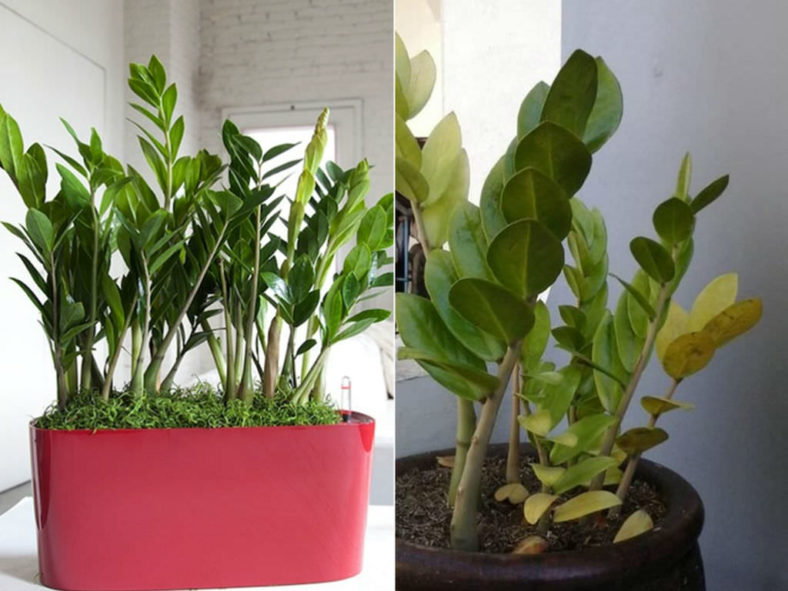Zamioculcas zamiifolia, commonly known as ZZ Plant, thrives well in USDA Plant Hardiness Zone 9b through 11 and will not tolerate so much as a hint of frost. The ZZ Plant is an ancient one whose prehistoric appearance may remind you of a Cycad, though they are unrelated.
Tough, drought-resistant, and low-light tolerant, this undemanding beauty may be the perfect plant for the forgetful or neglectful gardener. However, gardeners who do not water often are the ones this plant loves best.
1. Remove the ZZ Plant with yellowing leaves from its pot to rescue it. The discoloration is typically caused by excessive water, which allows water- and food-storing rhizomes to rot due to fungal development. As a result, this so-called "eternal plant" will die from overwatering.
2. Shake as much soil from the root ball as you can. Discard it, do not reuse it, or add it to the compost heap, as it is probably infected with fungus. Set the plant on several layers of newspaper and examine the roots. You will probably find some soft, mushy roots and possibly rotting tubers. Using sharp, clean pruning shears, clip any diseased tissue you see and discard it.
3. Pick any yellowing leaves off the ZZ Plant. If the stem is yellow, clip it off where it grows from the tuber. Check the tuber closely for signs of rot. Prune it out if it appears diseased.

4. Drench the roots and tubers with a fungicidal solution such as thiophanate-methyl. Follow the packaging instructions carefully.
5. Scrub the pot with hot, soapy water. Soak it in a solution of 9 parts water and 1 part bleach for 30 minutes. Rinse it thoroughly.
6. Combine equal parts of potting mix for succulents and perlite to create an excellent growing medium for ZZ Plants. Repot the plant, move it to a warm room with low lighting, and withhold water for about a week to allow it to recover. ZZ Plant returns quickly from adversity, and new shoots will soon emerge.
7. Return the ZZ Plant to its usual spot after a week of rest. This plant will do best with as much bright indirect light as you can provide. While it will do well even in low light, more is better. Maintain a temperature between 76°F and 90°F (24°C and 32°C), with an optimum range of 80°F to 87°F (27°C to 30°C). Temperatures below 76°F (24°C) will inhibit the plant's growth.
8. Water your ZZ Plant thoroughly to keep the soil surface evenly moist throughout the growing season. Allow the plant to dry out slightly between waterings. Water again when the top 1 inch (2.5 cm) of soil feels dry. Water no more than once weekly during the winter. Do not allow it to stand in water.
9. Feed this plant with a balanced, water-soluble houseplant fertilizer at half strength every two months while actively growing.
10. Set the ZZ Plant outdoors in a shady spot in the summer. It will appreciate the bright natural light and fresh air.
Source: sfgate.com
Links
- Back to genus Zamioculcas
- Succupedia: Browse succulents by Scientific Name, Common Name, Genus, Family, USDA Hardiness Zone, Origin, or cacti by Genus